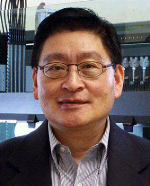-
Research ArticleView abstract
 PDF
PDF
 Full text
Artificial General Intelligence (AGI) represents a significant leap in artificial intelligence, aiming to create machines capable of human-like cognition and adaptability. This abstract provides a concise overview of AGI and its real-time interaction with humans. AGI, unlike narrow AI, possesses the ability to excel across diverse domains, making it a versatile and intelligent companion for various tasks...... ReadMore
Full text
Artificial General Intelligence (AGI) represents a significant leap in artificial intelligence, aiming to create machines capable of human-like cognition and adaptability. This abstract provides a concise overview of AGI and its real-time interaction with humans. AGI, unlike narrow AI, possesses the ability to excel across diverse domains, making it a versatile and intelligent companion for various tasks...... ReadMore -
Review ArticleView abstract
 PDF
PDF
 Full text
Open-channel aluminum with directional holes is fabricated by extraction of stainless steel wires coated with boron nitride and magnesium hydride, which are embedded in solidified aluminum. The extraction force decreases remarkably by adding magnesium hydride to boron nitride, which is attributed to formation of porous. layers between the wires and aluminum. Besides, the extraction force decreases...... ReadMore
Full text
Open-channel aluminum with directional holes is fabricated by extraction of stainless steel wires coated with boron nitride and magnesium hydride, which are embedded in solidified aluminum. The extraction force decreases remarkably by adding magnesium hydride to boron nitride, which is attributed to formation of porous. layers between the wires and aluminum. Besides, the extraction force decreases...... ReadMore -
Research ArticleView abstract
 PDF
PDF
 Full text
On several enzymatic and protein activities, the toxicities of commercial detergent (Tide), a home washing product, were examined in Asian snakehead fish (Channa punctatus). In a renewal bioassay process, fish were subjected to various detergent doses for 4 days. Variation in protein and others enzymatic levels were ascertained by following the Biuret and Randox techniques, respectively...... ReadMore
Full text
On several enzymatic and protein activities, the toxicities of commercial detergent (Tide), a home washing product, were examined in Asian snakehead fish (Channa punctatus). In a renewal bioassay process, fish were subjected to various detergent doses for 4 days. Variation in protein and others enzymatic levels were ascertained by following the Biuret and Randox techniques, respectively...... ReadMore -
Review ArticleView abstract
 PDF
PDF
 Full text
In recent years, underground tunneling projects around the world have developed rapidly, but have been criticized by environmental organizations due to the huge carbon emissions that accompany the construction process. Meanwhile, reinforced concrete segments are prone to breakage or cracking during transportation and construction, which severely threatens the structural safety of the tunnels...... ReadMore
Full text
In recent years, underground tunneling projects around the world have developed rapidly, but have been criticized by environmental organizations due to the huge carbon emissions that accompany the construction process. Meanwhile, reinforced concrete segments are prone to breakage or cracking during transportation and construction, which severely threatens the structural safety of the tunnels...... ReadMore -
Research ArticleView abstract
 PDF
PDF
 Full text
Trip-aided Bainitic Ferrite (TBF) or Carbide-Free Bainite (CFB) is a special kind of steel offering superior combination of strength, toughness, and ductility due to transformation-induced plasticity (TRIP) effect. The current work involves critical review of this category of steel so as to present a brief state-of-the-art concept about such steels considering their alloy chemistry with a relevant discussion about role of each element...... ReadMore
Full text
Trip-aided Bainitic Ferrite (TBF) or Carbide-Free Bainite (CFB) is a special kind of steel offering superior combination of strength, toughness, and ductility due to transformation-induced plasticity (TRIP) effect. The current work involves critical review of this category of steel so as to present a brief state-of-the-art concept about such steels considering their alloy chemistry with a relevant discussion about role of each element...... ReadMore -
Research ArticleView abstract
 PDF
PDF
 Full text
Wireless charging systems have seen a rapid rise in medical devices, mobile sensing, consumer electronics, electric vehicles, and other applications due to their high operational flexibility. This paper aims at providing an in-depth systematic analysis of contemporary wireless charging and mobile sensor systems based on a comprehensive analysis of recent literature...... ReadMore
Full text
Wireless charging systems have seen a rapid rise in medical devices, mobile sensing, consumer electronics, electric vehicles, and other applications due to their high operational flexibility. This paper aims at providing an in-depth systematic analysis of contemporary wireless charging and mobile sensor systems based on a comprehensive analysis of recent literature...... ReadMore -
Mini ReviewView abstract
 PDF
PDF
 Full text
Self-Powered Neutron Detectors (SPNDs) are specialized devices used for detecting and measuring neutron radiation. Unlike traditional detectors that require external power sources, SPNDs are unique in that they generate their own electrical power from the radiation they detect. Self-Powered Neutron Detectors (SPNDs) find important applications in the core of Light Water Reactors (LWRs)..... ReadMore
Full text
Self-Powered Neutron Detectors (SPNDs) are specialized devices used for detecting and measuring neutron radiation. Unlike traditional detectors that require external power sources, SPNDs are unique in that they generate their own electrical power from the radiation they detect. Self-Powered Neutron Detectors (SPNDs) find important applications in the core of Light Water Reactors (LWRs)..... ReadMore -
Research ArticleView abstract
 PDF
PDF
 Full text
For the superconductors suffering from phase fluctuations, finite electrical resistance exists below the pairing temperature Tc unless it undergoes Berezinskii-Kosterlitz-Thouless (BKT) transition where vortices and anti-vortices form pairs a particular temperature TBKT..... ReadMore
Full text
For the superconductors suffering from phase fluctuations, finite electrical resistance exists below the pairing temperature Tc unless it undergoes Berezinskii-Kosterlitz-Thouless (BKT) transition where vortices and anti-vortices form pairs a particular temperature TBKT..... ReadMore
Lupine Publishers Group
Lupine Publishers
ISSN: 2641-6921
Modern Approaches on Material Science
Modern Approaches on Material Science (MAMS) is a peer-reviewed open access journal. It deals with elements of physics and chemistry, and it is the leading in nanoscience and nanotechnology research. Materials that are in research are Electronic, optical and magnetic materials and Computational materials science and materials theory, Nanomaterials, Biomaterials. These provide high quality, faithfully reviewed and quick publication, to cater the insistent need of scientific community. Modern Approaches on Material Science publishes all types of Research Article, Review Article, Short Communications, Editorials, Mini Reviews covering all areas like metals, ceramics, glasses, polymers, electrical materials, nanostructured materials, composite materials, biological and biomedical materials, fibers, and nanocomposites.



















.png)
.jpg)

